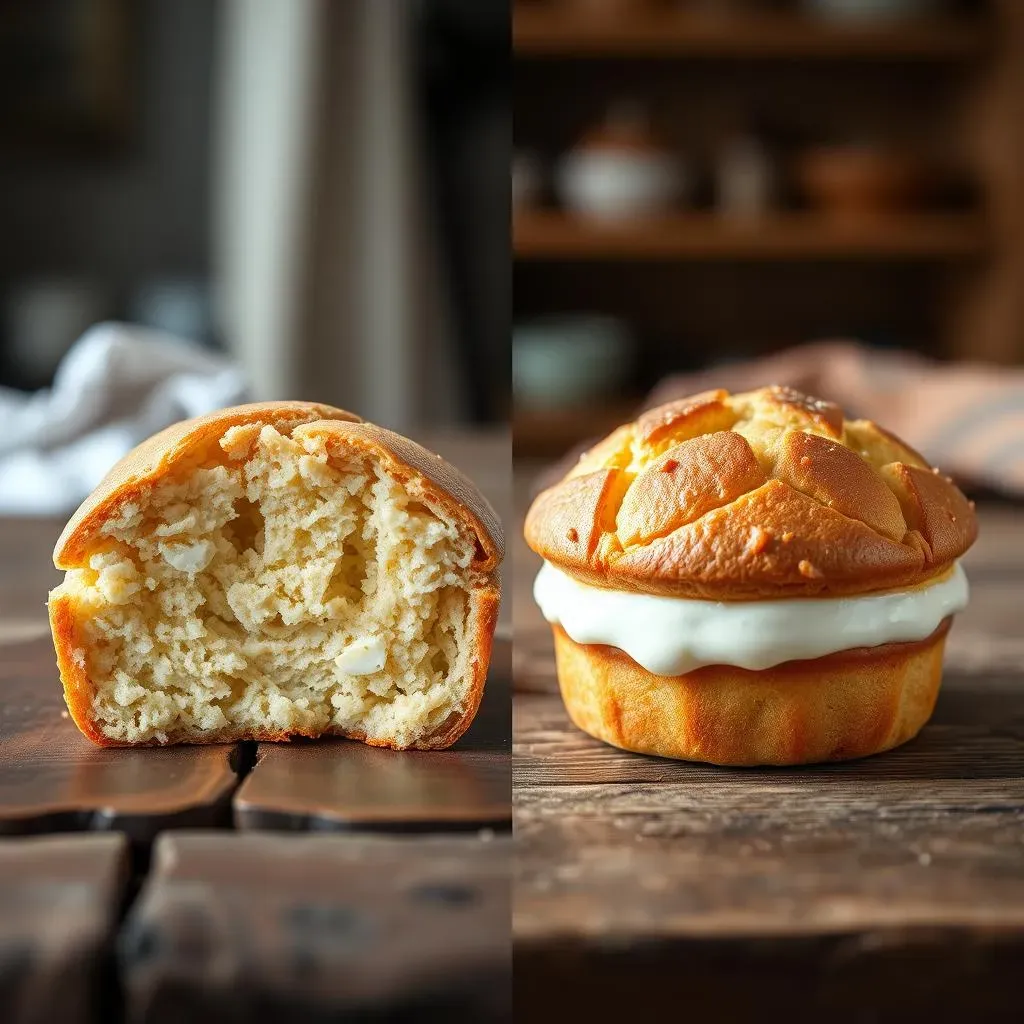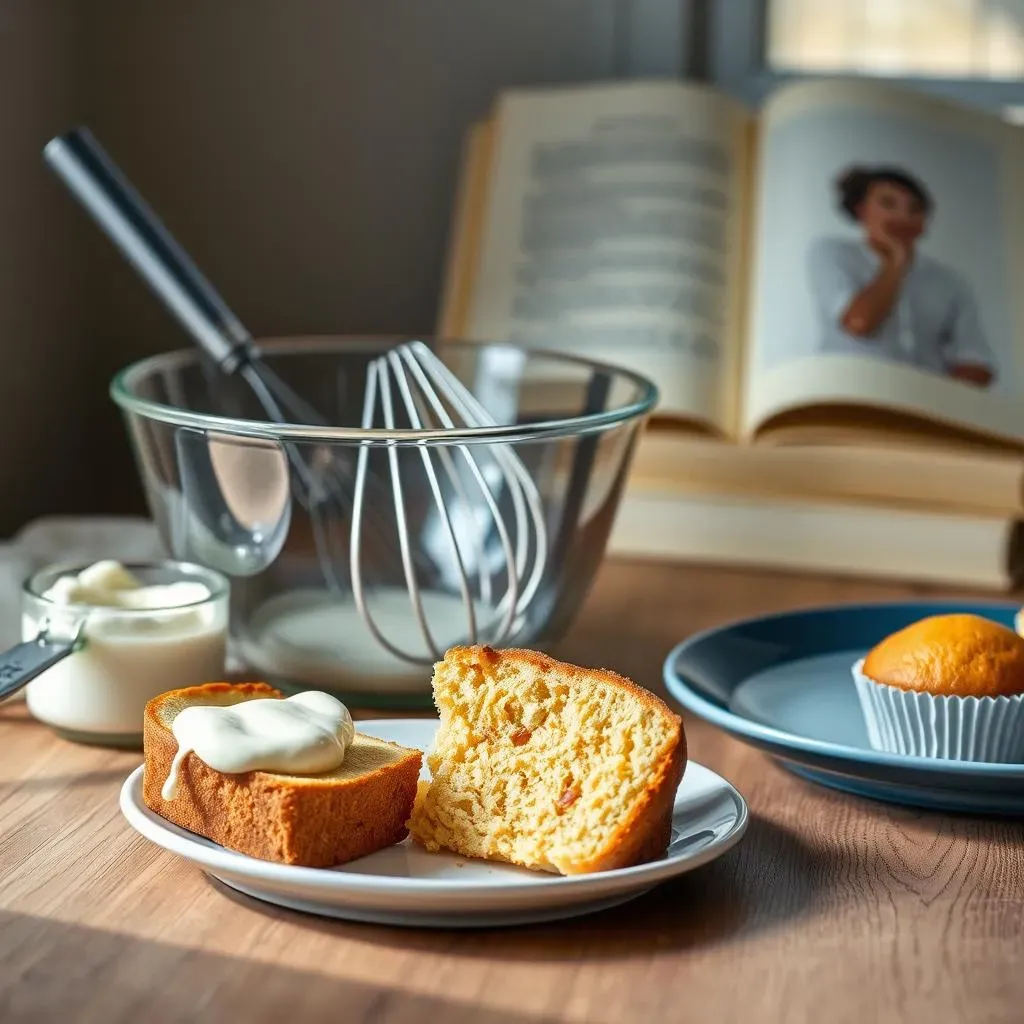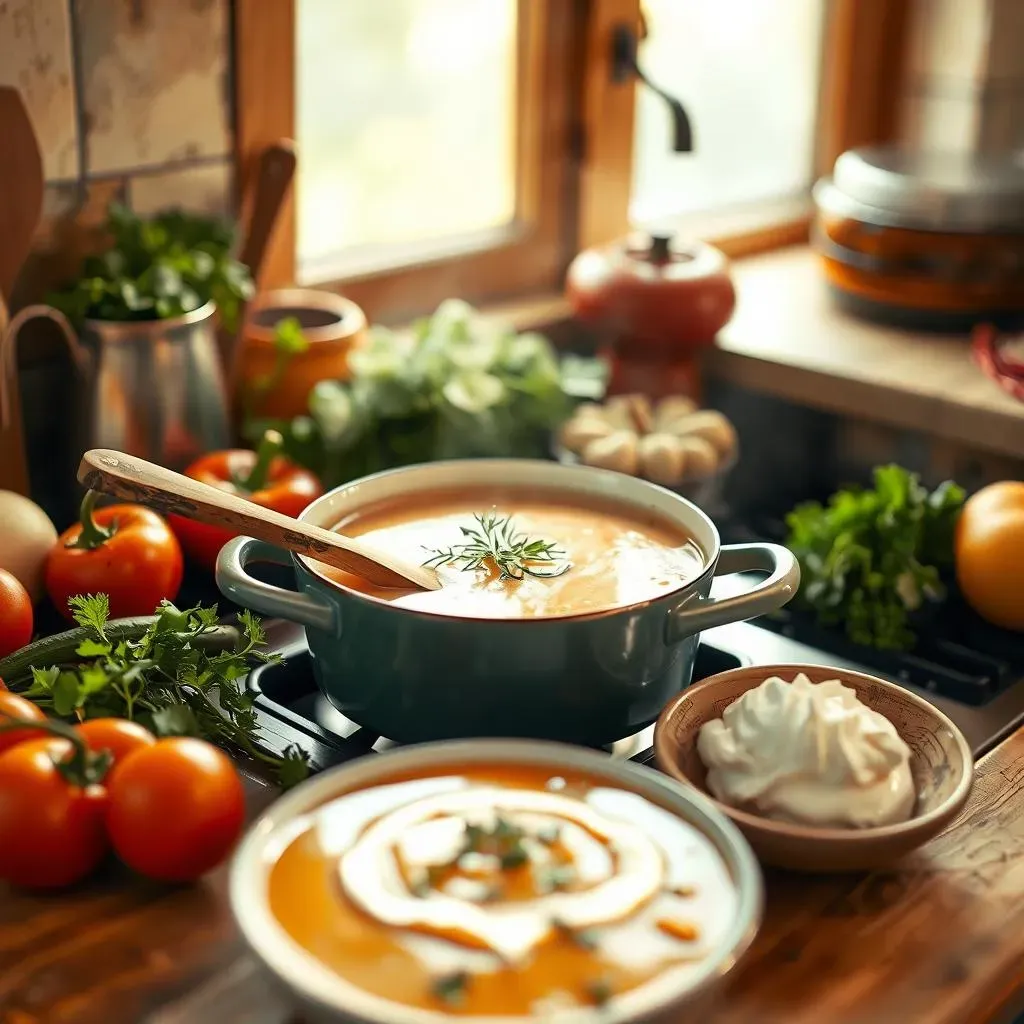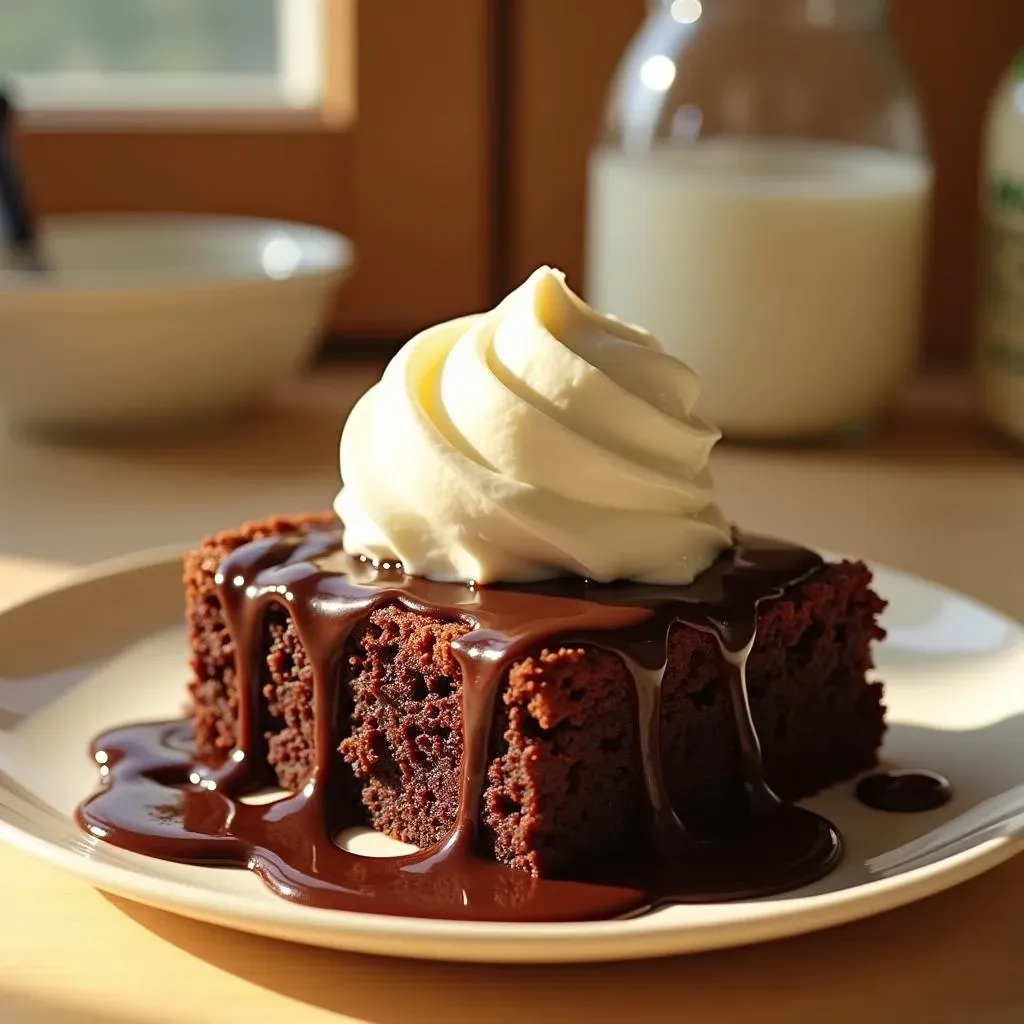Table of Contents
Ever stared blankly at a recipe, realizing you're missing a key ingredient – half-and-half? Don't panic! We're diving into the creamy question that plagues many a home cook: can I substitute sour cream for half-and-half? This isn't just about swapping ingredients; it's about understanding the nuances of flavor and texture. We'll explore the world of sour cream substitutions, examining how it performs in both baking and cooking. Get ready to discover whether sour cream can truly step up to the plate (or bowl!) and deliver the creamy goodness you crave. We’ll tackle the “can I substitute sour cream for half-and-half” question head-on, offering practical advice and real-world examples to guide your culinary decisions. Prepare to become a sour cream substitution expert! By the end, you’ll confidently navigate any recipe, knowing exactly when sour cream shines and when it might fall flat. Let's get started!
Sour Cream vs. HalfandHalf: A Taste Test

Sour Cream vs. HalfandHalf: A Taste Test
The Great Creamy Showdown
So, you want to know about sour cream versus half-and-half? Let's get down to the nitty-gritty. Half-and-half, as its name suggests, is a blend of milk and cream. It's lighter and less tangy than sour cream. Think of it as the creamy, mild-mannered sidekick. Sour cream, on the other hand, is a cultured dairy product, meaning it's fermented, giving it that characteristic tang. It’s thicker and richer than half-and-half, packing a more intense flavor punch.
Think of it like this: half-and-half is the polite guest at a dinner party—subtle and pleasant. Sour cream is the life of the party—bold and unforgettable. The texture difference is also significant. Half-and-half is thinner and pourable, while sour cream has a thicker, almost spreadable consistency. This impacts how they behave in recipes, especially baked goods. Want to know more about other sour cream substitutes? Check out our guide on creme fraiche alternatives.
Characteristic | Half-and-Half | Sour Cream |
|---|---|---|
Texture | Thin, pourable | Thick, spreadable |
Taste | Mild, creamy | Tangy, rich |
Fat Content | Lower than sour cream | Higher than half-and-half |
Now, let's talk about the acidity. Sour cream's tanginess can react differently with other ingredients than the more neutral half-and-half. This is especially important in baking, where it can affect the rise and texture of your goodies. If you're substituting, you might need to adjust other ingredients, like baking soda or lemon juice, to balance the pH. For instance, if you're replacing half-and-half with sour cream in pancakes, you might find that your pancakes are a bit more dense. This is because sour cream is thicker and adds more moisture.
But don't worry! We'll explore specific recipe adjustments in the next section. For now, let's just appreciate the unique personalities of these two creamy contenders. Need a sour cream substitute for baking? We’ve got you covered with our detailed guide on Greek yogurt alternatives.
- Consider the recipe's desired flavor profile.
- Think about the texture you want to achieve.
- Remember, sour cream adds tang and thickness.
Baking with Sour Cream Instead of HalfandHalf: A Recipe for Success (or Disaster?)

Baking with Sour Cream Instead of HalfandHalf: A Recipe for Success (or Disaster?)
Cakes and Cupcakes: A Creamy Conundrum
Let's talk cakes. Swapping half-and-half for sour cream in a cake recipe can be a gamble. Sour cream's higher fat content and tang can create a denser, moister cake, but it might also impact the rise. The acidity could react with baking soda, leading to a slightly different texture. You might notice a more pronounced tangy flavor, which can be delightful in some cakes (think lemon poppy seed!), but less so in others. It really depends on the specific recipe and your personal preference. Remember, every recipe is different, so always start with a small test batch if you're unsure.
If your recipe calls for a light and fluffy cake, you might want to proceed with caution. However, if you're aiming for a richer, more intensely flavored cake, sour cream can be a surprisingly delicious substitute. For more information on alternative sour cream choices for baking, check out our guide on Greek yogurt in baking.
- Start with a small test batch.
- Consider the recipe's desired texture.
- Adjust baking powder or soda if needed.
Cookies and Brownies: A Bold Experiment
Now, let's move onto cookies and brownies. Here, sour cream can introduce a delightful richness and chewiness. Its thickness can contribute to a fudgier brownie, while in cookies, it can create a softer, more tender crumb. The tanginess adds a subtle complexity to the overall flavor, complementing chocolate and other sweet ingredients beautifully. However, again, the increased moisture can alter the texture slightly, potentially making cookies a tad softer or spreading them more than anticipated. You might need to adjust baking times depending on how your dough reacts.
For example, if you're making chocolate chip cookies, substituting sour cream for half-and-half might result in a chewier, more intensely flavored cookie. In contrast, if you're making delicate sugar cookies that require a crisp texture, it might not be the best choice. For a comprehensive guide on substituting sour cream, check out our ultimate guide to cream cheese substitutions.
Baked Good | Sour Cream Effect | Considerations |
|---|---|---|
Cakes | Denser, moister, tangier | Adjust leavening agents |
Cookies | Chewier, softer | Adjust baking time |
Brownies | Fudgier, richer | Minimal adjustments needed |
Cooking with Sour Cream as a HalfandHalf Substitute: Creamy Creations

Cooking with Sour Cream as a HalfandHalf Substitute: Creamy Creations
Soups, Sauces, and More: A Creamy Transformation
In the realm of cooking, sour cream can often be a surprisingly successful stand-in for half-and-half. Think creamy soups—a dollop of sour cream adds richness and a subtle tang that elevates a simple tomato soup or a creamy mushroom creation. It works particularly well in dishes where the tanginess complements the other flavors. For instance, in a creamy chicken and wild rice soup, the sour cream's tanginess cuts through the richness of the chicken and cream, creating a more balanced flavor profile. Don't be afraid to experiment!
The thicker consistency of sour cream might require a bit of thinning if you're aiming for a smoother sauce. A splash of milk or broth usually does the trick. For example, if you're making a creamy pasta sauce, you might find that a simple blend of sour cream and pasta water creates a luxuriously smooth sauce without the need for additional cream. Need more ideas for sour cream substitutions? Check out our guide on cream substitutions.
- Thin sour cream with milk or broth for smoother sauces.
- Consider the existing flavors in your dish.
- Sour cream's tang adds depth and complexity.
Dips and Dressings: A Tangy Twist
Sour cream shines in dips and dressings. Its tangy flavor and creamy texture make it a perfect base for a variety of recipes. Think creamy dill dip, a vibrant salsa verde, or a tangy ranch dressing. In these applications, the thicker consistency of sour cream works to its advantage, creating a dip that's both flavorful and substantial. It holds its shape well and coats ingredients beautifully. The tanginess provides a nice counterpoint to the richness of other ingredients.
For example, in a creamy avocado dip, sour cream's tanginess balances the richness of the avocado, creating a more complex and refreshing flavor. Similarly, in a creamy cilantro-lime dressing, the sour cream's tang complements the bright citrus notes, creating a vibrant and flavorful dressing that's perfect for tacos or salads. Looking for more ways to use sour cream? See our guide on using sour cream as a buttermilk substitute.
Dish Type | Sour Cream Benefit | Flavor Considerations |
|---|---|---|
Soups | Adds richness and tang | Balance with other flavors |
Sauces | Creates creaminess and body | Thin if needed for smoothness |
Dips & Dressings | Provides texture and tang | Complement existing flavors |
The Verdict: When to Swap, When to Skip

The Verdict: When to Swap, When to Skip
Baking Battles: Sour Cream's Strengths and Weaknesses
Let's be honest: sour cream isn't a *perfect* half-and-half swap in baking. Its tang and higher fat content can significantly alter the texture and flavor of your creations. For delicate cakes needing a light and airy texture, sticking with half-and-half is usually best. The increased moisture from sour cream can lead to a denser, potentially gummy, result. However, in recipes where a richer, moister texture is desired—like some muffins or brownies—sour cream can be a surprisingly delicious addition. It adds a subtle complexity that can really elevate the final product. It all depends on the specific recipe and what you're aiming for.
Think of it this way: a delicate angel food cake needs the lightness of half-and-half. A fudgy chocolate brownie, however, might welcome sour cream's richness and tang. Remember to always start with a test batch when experimenting with substitutions, especially when baking. If you’re still unsure about sour cream substitutes, check out our guide on using Greek yogurt instead.
- Cakes: Avoid sour cream unless a dense, moist texture is desired.
- Cookies: Sour cream can add chewiness, but may affect spread.
- Brownies: Sour cream often works well, adding richness and fudginess.
Cooking Confidence: Sour Cream's Culinary Prowess
In savory dishes, sour cream often proves a more versatile substitute for half-and-half. Its tanginess can add depth and complexity to soups, sauces, and dips. In creamy tomato soup, for instance, a dollop of sour cream adds a delightful tang that cuts through the sweetness of the tomatoes. In a creamy mushroom sauce, it creates a richer, more luxurious mouthfeel. The thicker consistency might require thinning with milk or broth, but the result is often well worth the effort. The key is to consider the existing flavors in your dish and how the sour cream's tanginess might complement or contrast with them.
For example, a creamy chicken and vegetable curry might benefit from the subtle tang of sour cream, adding a layer of flavor that elevates the dish beyond a simple creamy sauce. In contrast, a delicate cream sauce for fish might be better served with a neutral half-and-half to avoid overpowering the delicate flavor of the fish. For more ideas on using sour cream, check out our guide on using sour cream instead of buttermilk.
Dish Type | Sour Cream Works Well | Sour Cream Might Not Work Well |
|---|---|---|
Soups | Tomato, mushroom, potato | Delicate broth-based soups |
Sauces | Pasta sauces, creamy stews | Delicate white sauces |
Dips | Vegetable dips, taco dips | Simple, neutral dips |